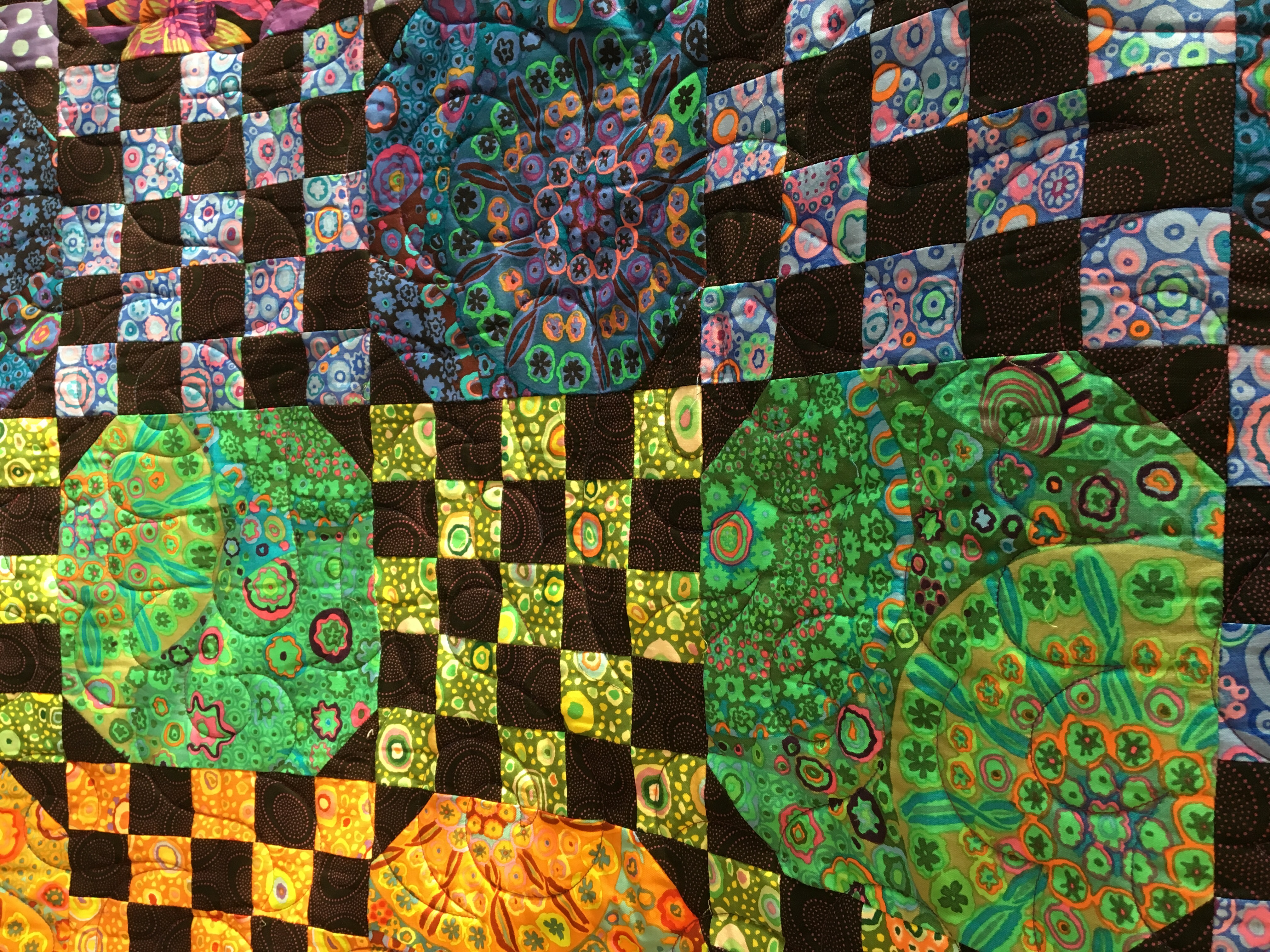
How many quilt patterns have I had over the years that give detailed instructions for piecing the quilt top, then end with the sentence “Quilt as desired.” I think I’ve even used it in some of my own patterns if I’m very honest about it, despite the fact that these words are almost useless to the quilter. Of course the quilter can quilt it as desired. You don’t buy a pattern with a legal requirement to only quilt the quilt a single way, that would be silly. So yes, quilt as desired, but what does that mean to you?
When I really started quilting seriously in the early 90’s, machine quilting was done on your home sewing machine, long arm quilting machines were just coming onto the scene, and ‘real’ quilting was still done by hand. I remember how hard it was to get long arm quilting accepted by quilt shows, whereas now they give special awards for machine quilting. My how times do change. Even though things are different now, there are a handful of useful guidelines to help you figure out how you desire to quilt your quilt.
When I’m looking at a pattern I usually take into account the quilting. If the quilt top is very intricately pieced, with very little negative or background space, most detailed custom quilting is going to be completely lost unless you get right up on top of the quilt to see it. The thought of doing intricate custom quilting where nobody will notice seems like a waste of effort to me. That being said, picking an edge to edge or all over pattern that compliments the quilt can be tricky too. There are so many to chose from. I have noticed that for pieced quilts, I like very rounded and flowing E2E designs. I like the contrast of the straight lines in the piecing with the fluid lines of the quilting and how that looks on a finished quilt. A quilt with a more modern design, though, can really benefit from an angular quilting pattern, including matchstick quilting or very narrow parallel lines.
In the realm of custom quilting, the idea is that the quilting enhances the quilt design helping to accentuate the pattern, which is very subjective to the quilter. The one point that I think matters a lot is that the density of the quilting is very even across the quilt. I say this for two reasons. 1) if there are giant areas that are not quilted and other areas that are heavily quilting, you will have a really difficult time getting a quilt that lays flat and square after it’s washed. 2) if you are putting the quilt in a show, a large range in quilt density can make it look like you ran out of time or ideas before you finished quilting the quilt. I have had this issue in the past. I am really intense in my quilting in the center of the quilt and by the time I get to get borders, I’m late and I’m tired and I do just enough to anchor the fabric. It always ends up looking unfinished in the end and I’ve always regretted not doing more work to finish out the quilt.
The other aspect of quilting is in regards to the use of the quilt once it’s finished. If it’s going to sit in the backseat of my car for my dog to sit on, it may not need to be custom quilted, BUT that quilt would be an excellent opportunity to practice new skills where the outcome doesn’t matter to the stated purpose of the quilt. Your dog is not going to judge you on the quality of your custom quilting job and it’s a chance to learn new skills. In a lot of cases, quilted and bound is more important in my world than how it is quilted. I would love to get caught up enough to the point where I could chose to do a lot of detailed work on a quilt, just for me to enjoy at home, but I’m not to that point yet. Close but not there. I am on the edge of wanting to do more custom quilting and I’m sure I will do several tops, not because they have to have custom quilting but just because I need the practice and experience.
This is one area where looking at magazines, or Instagram or Pinterest can really help. You can look at a variety of quilts and see all the amazing ways that other quilters have chosen to quilt them. If you find a designer or quilter that produces work you really like, look at their posts carefully, see what kind of a style they have and how you can incorporate those ideas into your own quilts. There are also some really good skill building books on the market for custom quilting – Angela Walters has written some amazing books with instruction on how to do some of her more popular designs.
As with a lot of aspects of quilting, this comes down to some amount of talent coupled with a WHOLE LOT of practice. We won’t get good at it without doing it regularly. I keep telling myself that I will not be good at custom quilting if I never do any custom quilting. I just need to get a little farther through my pile of UFOs….


